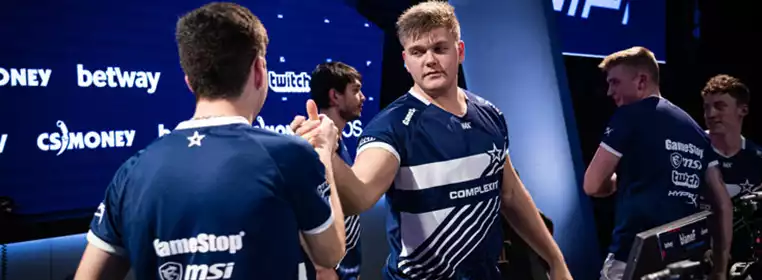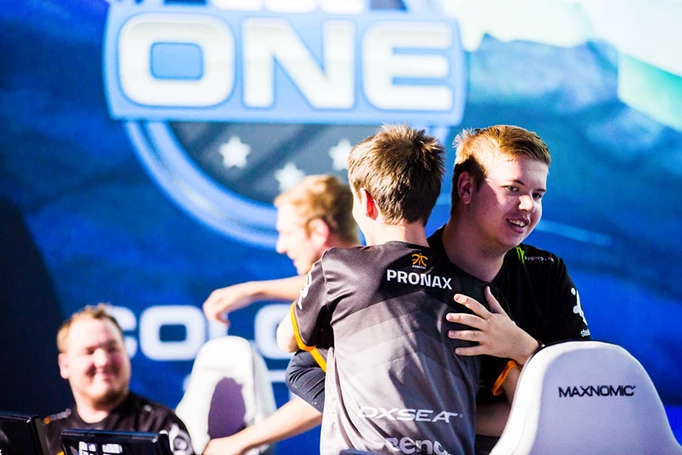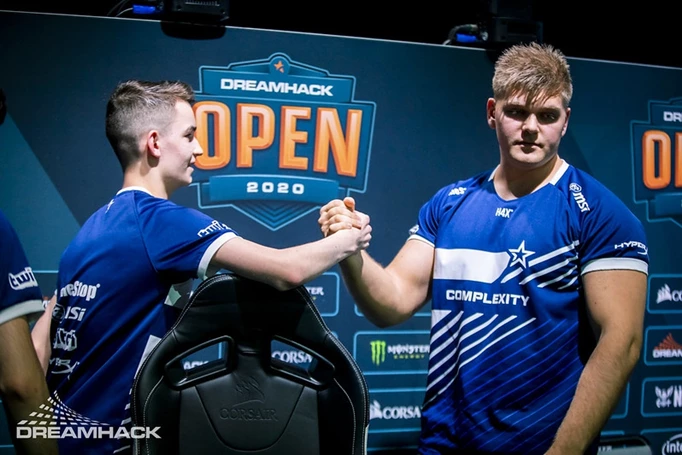blameF And The Legend Of The Mad-Fragging Caller

Nowadays, creating a CS:GO superteam requires huge investments. That holds particularly true if an organisation seeks to acquire only the best talent. Right now, Cloud9 are racking up insane sums for their new international project. So far, they have committed about $3.5M in buyouts and player salaries for the next three years - and they haven’t even signed the full roster yet!
But what happens if an organisation wants to create a self-proclaimed ‘juggernaut’ and doesn’t want to invest millions and millions in buyouts? Complexity have gone the hard route. They have scouted out the international landscape and identified promising prospects that were not necessarily tied to a Top 10 team. Their efforts have yielded fantastic results. After all, the team’s first-ever offline appearance resulted in wins over Astralis and Vitality, two of the strongest rosters of 2019. Obviously, players like Kristian “k0nfig” Wienecke and Valentin “poizon” Vasilev have had an enormous part in their success as of late. But there’s one specific player who has had the biggest impact on the team.
The story of Benjamin “blameF” Bremer took an unusual turn in 2019. Under Heroic, he had mild success. The team was settling into the Top 20, which meant that they got to play some premier events, like ESL One Cologne or IEM Chicago. However, they were unsuccessful at all of these tournaments and often exited before the playoffs. Under blameF, they weren’t better or worse off than before, which led to a lot of confusion when he was signed by Complexity in September of 2019. His colleagues were either considered inexperienced or washed up, as in the case of k0nfig. Back then, the organisation’s signings didn’t inspire a lot of trust in the ‘juggernaut’, as Jason Lake, the CEO of Complexity, called the project.
Obviously, blameF and his boys have defied all expectations with their incredible display throughout the year. So much of that is down to the ability of blameF to make solid mid-round calls while being their most effective individual player. To understand why this is so important, we need to go back through the years. Historically, there haven’t been a lot of ‘mad-fragging IGLs’ within CS:GO esports.

 Click to enlarge
Click to enlargeA BRIEF HISTORY OF IN-GAME-LEADERS IN CS:GO
Taking a look at the Major-winning rosters, it becomes apparent that good in-game-leading often comes at a cost. Players like Richard “Xizt” Landström, Markus “pronax” Wallsten, Finn “karrigan” Andersen and Danylo “Zeus” Teslenko may have led their teams to victory quite a few times, but they usually finished at the bottom of the scoreboard. So there’s always a trade-off involved - you get superior strats, but you also create a weak point. Most crucially, you limit the number of star players that you can put on the roster.
In very few instances, in-game-leaders were also top fraggers. Back in their primes, players like Vincent “Happy” Schopenhauer or Robin “flusha” Rönnquist regularly topped the scoreboard for their teams, but they didn’t really get deeply involved in the tactical side of Counter-Strike. That is why their teams, fnatic and EnVyUs, fell from their top positions when the meta shifted towards a strategical approach to the game in late 2015 and early 2016. Back then, the scene was overtaken by Luminosity Gaming (later SK), who featured one of the first individually talented and strategically sound IGLs in Gabriel “Fallen” Toledo. His AWP was a centrepiece of their actions and Fallen produced a lot of highlight-reel-worthy material.
Another great example of this would be Lukas “gla1ve” Rossander and Astralis. The Danes have almost perfected the strategical side of CS:GO, constantly coming up with new and inventive ways to play the game. They have now held a firm grip on the professional scene ever since 2018 and a lot of that is courtesy of gla1ve’s work as a caller. In lots of instances, he has proven that he can step up his game and contest some of the world’s best CS:GO players individually. But while he and Fallen certainly haven’t been weak points for their rosters, they still weren’t their teams’ primary star players - that would be Nicolai “device” Reedtz and Marcelo “coldzera” David.

 Click to enlarge
Click to enlargeBLAMEF ENTERS THE STAGE
It is only fitting that this torch is being carried further now by blameF. Taking a look at Complexity’s recent encounter with ENCE during the ESL Pro League Season 12 Playoffs reveals how much impact his calling has on their success in the game. Even with a stand-in, he managed to implement a lot of structure. He had scouted the ENCE boys out very well and knew that they like to go for a lot of early-round aggression on the CT side. So he told his players to sit back and wait for pushes, which helped Complexity secure quite a few entry kills over the course of the game.
Most crucially, his mid-round calling was on point. From the information that he and his colleagues gathered, he identified the weak bomb sites and led carefully planned executes. The team always held onto a lot of utility until late in the round, which allowed them to single out ENCE players or force them off the sites. Often times, he nullified his opponents’ impact without even facing them directly. Those are the marks of a great in-game-leader.
Obviously, he isn’t the only one who can do that. In fact, most top-tier teams boast leaders of a similar calibre - but none of them have racked up a 1.23 rating over the past couple of months. On top of that, blameF is Complexity’s entry fragger! With a 71% win rate in opening duels, he is so much more than just a nifty caller. So even if he doesn’t manage to win big titles under Complexity, his star is rising, and he certainly has a place at the very top of competitive CS:GO. Most crucially, Complexity is his first top team, and with 23 years of age, he has more than enough time left to make his way onto even more talented rosters. The legend of the ‘mad-fragging IGL’ has just started.
Images via BLAST | ESL | DreamHack
